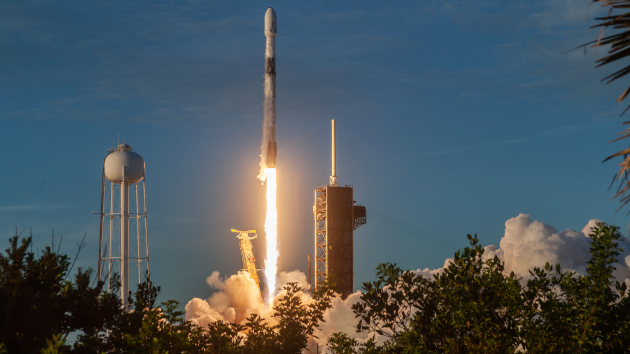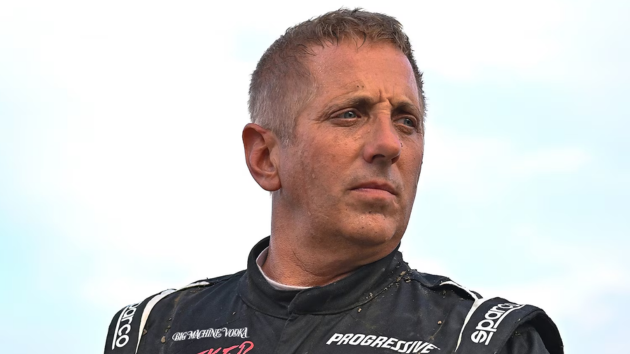SpaceX tries for 2 successful Starship missions in a row with Monday’s launch
Written by ABC Audio ALL RIGHTS RESERVED on October 11, 2025

(NEW YORK) — Elon Musk, the founder and CEO of SpaceX, has called “rapidly reusable, reliable rockets” the key to humans becoming a multiplanetary society. And when it comes to his company’s Falcon 9, SpaceX has shown that a rocket can do all those things.
The Falcon 9 has now completed 542 missions, 497 landings and 464 reflights, according to the SpaceX website.
But to reach the Moon and Mars and establish settlements on both, SpaceX will need its larger, more complex and significantly more powerful Starship and its Super Heavy booster to reach Falcon 9’s level of reliability and reusability.
Soon, SpaceX will have the chance to show that Starship’s successful August flight, the first to complete all its primary mission goals, was no fluke.
Barring a delay due to bad weather or mechanical issues, the stainless steel Starship and Super Heavy booster will conduct its 11th flight test on Monday, Oct. 13, at 7:15 p.m. ET, from the company’s Starbase in South Texas. A mission the company hopes will build on the much-needed success of its previous test. SpaceX will be operating Starship autonomously and there will be no astronauts aboard during the flight.
In late August, Starship and its Super Heavy booster successfully reached space on a suborbital trajectory at a near-orbital velocity, deploying a series of Starlink simulators before returning to Earth with such navigational precision that the reentry was captured on a camera attached to a remote buoy in the middle of the Indian Ocean.
“I would give [flight test 10] an A-plus. That was an A-plus performance. The only thing that was a little bit off was that there was some damage in the aft skirt compartment of Starship during the flight, but most of the mission objectives were achieved,” said Olivier de Weck, the Apollo Program Professor of Astronautics and Engineering Systems at MIT and editor-in-chief of the “Journal of Spacecraft and Rockets.” “I don’t think this could have gone much better,” he added.
But now, de Weck says SpaceX needs to demonstrate that it can build on its August success and move the program forward with new mission objectives.
“I think the next step is to actually land the Starship, still not go into orbit and stay over multiple orbits, but actually land and recover the actual Starship,” said de Weck. “Recovery of the Starship, an upright landing, with retro propulsion on a fixed platform, that’s the next step.”
SpaceX is not planning an upright, fixed platform landing for the upcoming 11th flight test. Like the previous mission, the Starship will splash down in the Indian Ocean. The Super Heavy first stage booster, with its 24 Raptor engines, which SpaceX said was previously used during flight test eight, is also scheduled to splash down in the ocean. In several previous missions, it returned to the launch site and was caught by the tower’s mechanical “chopstick” arms.
The development of Starship hasn’t come easily for SpaceX, with several high-profile setbacks along the way. However, despite an explosion on the launch pad during a pre-flight engine test and several explosions and mechanical failures during previous test flights, Musk has long maintained that learning from failures is an integral part of SpaceX’s engineering process.
“I’m not surprised where the program is. It’s moving forward through the usual SpaceX iterative development model, and not surprisingly, it’s behind SpaceX’s ambitious schedule projections,” said Greg Autry, associate provost for space commercialization and strategy at the University of Central Florida. “But that wouldn’t make it any different than almost everything else that they’ve done in the past, other than that the scale of this is so large,” he added.
Autry is President Donald Trump’s nominee to be the chief financial officer of NASA.
Autry says he’s confident that SpaceX is headed in the right direction and said that Elon Musk and his companies tend to prove their critics wrong in the long run, delivering results even if it takes longer than anticipated.
“About ten years ago, Elon Musk promised me I was going to have a self-driving car shortly, and a lot of people said that was completely crazy. It wasn’t shortly, but I now have a self-driving car. I literally get in my car, push the button, and fifty miles later, I arrive at work. It is amazing. He delivers eventually,” Autry said.
Experts say that making the next generation of U.S.-designed and built rockets and spacecraft work is critical to achieving NASA’s goals of not only returning to the Moon but building a permanent lunar settlement and doing it before the Chinese.
During a late September ceremony at the Johnson Space Center announcing the new class of NASA astronauts, Acting NASA Administrator and Secretary of Transportation Sean Duffy spoke about the competition for space dominance.
“Now some are challenging our leadership in space, say, like the Chinese, and I’ll just tell you this, I’ll be damned if the Chinese beat NASA or beat America back to the Moon,” said Duffy. “We are going to win. We love challenges. We love competition, and we are going to win the second space race back to the Moon,” he added.
Autry, who first wrote about a new space race with China back in 2010, says China is determined to reach the Moon and dominate low-Earth orbit, but he believes the global competition will push American efforts forward.
“There are very credible people saying that they’re about to eclipse us in the next five years. I think that’s great for the prospect of competition that spurs us to work harder and take our role more seriously, and frankly to put funding into programs that we badly, badly need to fund,” said Autry.
Autry says that today’s space race should be compared to the “Age of Exploration” in the 15th and 16th centuries. He points out that while China had “an ambitious sailing-exploration program” in the early 1400s, European countries overtook the Chinese when the Europeans accelerated their global exploration efforts later in the century, at a time when China was pulling back.
“We are at that same moment in time right now. The countries that aggressively pursue going to the Moon and using the assets of space will dominate human history for the next several hundred years,” Autry said.
Autry believes that the billions of dollars being spent by companies like SpaceX and the federal government to support space exploration, return to the Moon and potentially get to Mars is money well spent.
“The countries that choose to take advantage of space resources will be wealthy, prosperous and happier than the countries that don’t. We have plenty of history to show that,” Autry said.
Autry says you just have to look at the first space program to see the benefits of this kind of investment.
“We would not have the computing environment, AI, the internet, solar power, fuel cells, and a variety of technologies at the level they are now if we had not made those investments that drove so much effort into engineering development and STEM education. It created the boom we’ve experienced since the second half of the 20th century,” he added.
Copyright © 2025, ABC Audio. All rights reserved.
 KVSP
KVSP 




